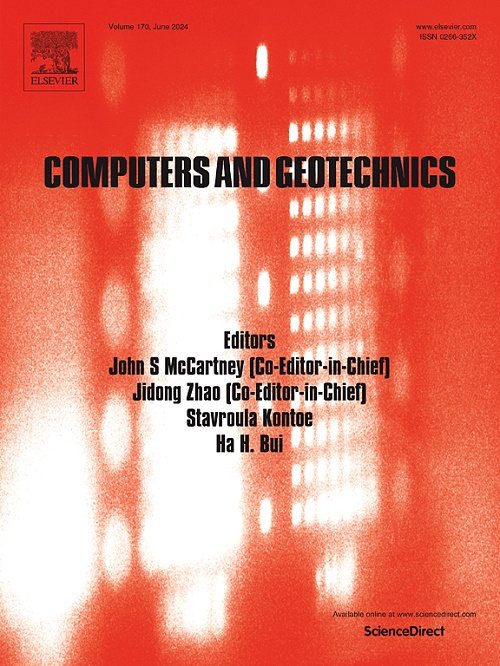An improved theoretical method for assessing tunnel response to pre-excavation dewatering: Time-dependent deflection, internal force, joint opening, and dislocation
IF 5.3
1区 工程技术
Q1 COMPUTER SCIENCE, INTERDISCIPLINARY APPLICATIONS
引用次数: 0
Abstract
Adjacent construction activities can cause significant deformation of the existing shield tunnel, yet the time-dependent development of these deformations is rarely documented, hindering the accurate prediction of potential hazards. This study presents a theoretical model based on the displacement input method to characterize the time-dependent response of tunnel induced by pre-excavation dewatering in an unconfined aquifer. The tunnel and subgrade are modelled as a Timoshenko beam and Pasternak foundation, respectively. The greenfield soil displacement is derived by consolidation theory, incorporating dynamic changes in the phreatic surface and the embedding depth of the waterproof curtain. The proposed solution is evaluated by well documented results of model testing on drawdown and finite element analyses on deformation of both soil and tunnel. Parametric assessments of tunnel deformation are conducted, analyzing the time-dependent response and influences of factors including the tunnel’s relative position to the dewatering zone, soil modulus, specific yield, and the embedding depth of the waterproof curtain. Results indicate that accounting for time-dependent effects significantly reduces the overestimation of tunnel deformation prior to excavation. Additionally, higher soil modulus and greater curtain embedding depth decrease final tunnel deformation, while tunnel position and specific yield primarily influence deformation distribution without altering maximum deformation. The findings of the study provide a more accurate basis for designing dewatering strategies and offer improved prediction for existing tunnel deformation caused by adjacent foundation pit projects.
一种评估隧道对开挖前脱水反应的改进理论方法:随时间变化的挠度、内力、接缝开口和位错
邻近的施工活动会引起现有盾构隧道的显著变形,但这些变形的随时间变化的发展很少被记录下来,这阻碍了对潜在危险的准确预测。本文提出了一种基于位移输入法的理论模型来描述无承压含水层开挖前降水引起的隧道时效响应。隧道和路基分别模拟为铁木申科梁和帕斯捷尔纳克基础。根据固结理论推导出绿地土体位移,考虑了潜水面动态变化和防水帷幕埋深。本文提出的解决方案是通过充分记录的模型试验和有限元分析土和隧道变形的结果来评估的。对隧道变形进行参数化评估,分析隧道相对于降水区位置、土体模量、比屈服、防水帷幕埋深等因素对隧道变形的时变响应及影响。结果表明,考虑时间相关效应可以显著降低开挖前对隧道变形的高估。较高的土体模量和较大的帷幕埋深会降低隧道最终变形,而隧道位置和比屈服主要影响变形分布,但不会改变最大变形。研究结果为设计降水策略提供了更准确的依据,并为相邻基坑工程引起的既有隧道变形预测提供了改进的依据。
本文章由计算机程序翻译,如有差异,请以英文原文为准。
求助全文
约1分钟内获得全文
求助全文
来源期刊

Computers and Geotechnics
地学-地球科学综合
CiteScore
9.10
自引率
15.10%
发文量
438
审稿时长
45 days
期刊介绍:
The use of computers is firmly established in geotechnical engineering and continues to grow rapidly in both engineering practice and academe. The development of advanced numerical techniques and constitutive modeling, in conjunction with rapid developments in computer hardware, enables problems to be tackled that were unthinkable even a few years ago. Computers and Geotechnics provides an up-to-date reference for engineers and researchers engaged in computer aided analysis and research in geotechnical engineering. The journal is intended for an expeditious dissemination of advanced computer applications across a broad range of geotechnical topics. Contributions on advances in numerical algorithms, computer implementation of new constitutive models and probabilistic methods are especially encouraged.
 求助内容:
求助内容: 应助结果提醒方式:
应助结果提醒方式:


